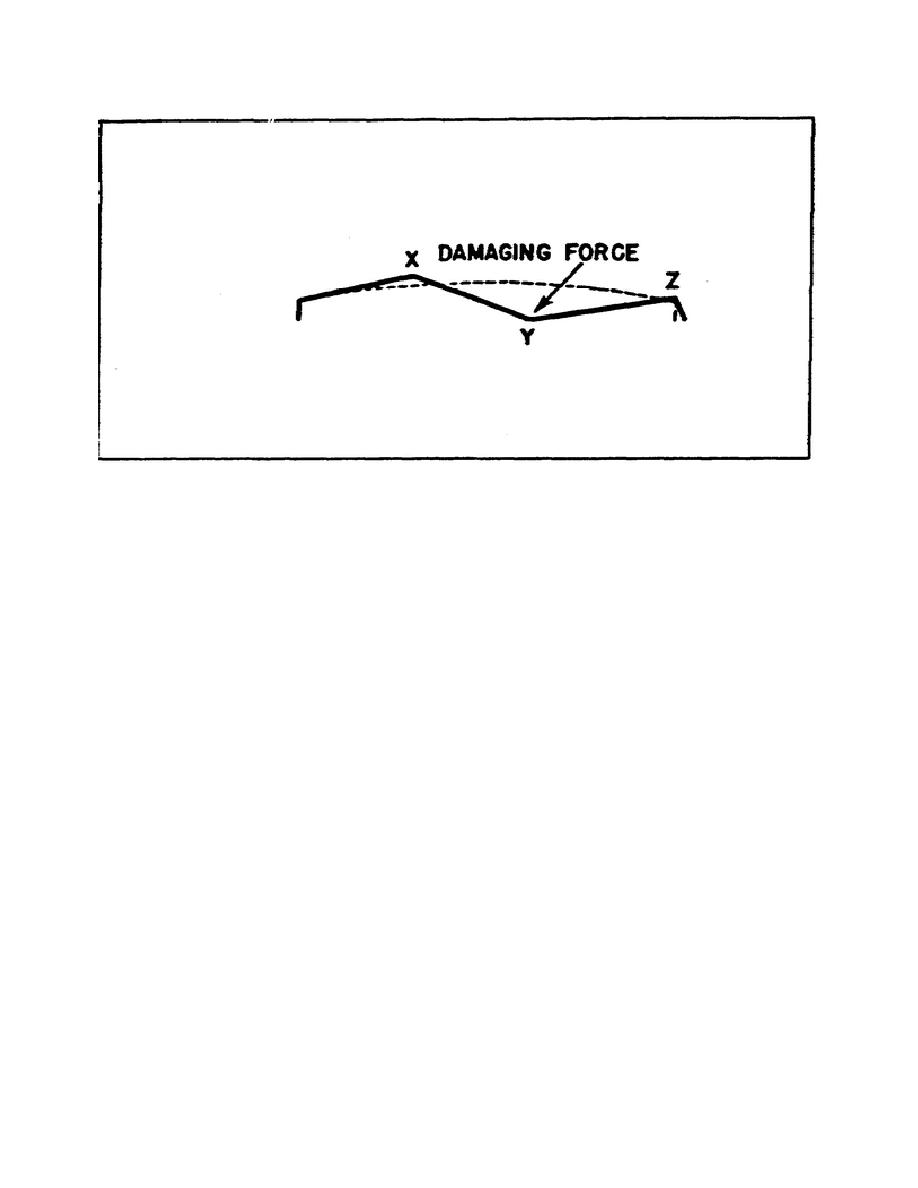
METAL BODY REPAIR - OD1653 - LESSON 1/TASK 1
FIGURE 14.
SIMPLE DAMAGE.
(8) Since ridge X is clearly the last created in the damage, it is the
first strain to be unlocked.
Place a low-crown dinging spoon on it (1)
(figure 15 on the following page) and hammer the spoon sharply, directing
the blows straight at the ridge. This unlocks the high metal and moves it
back toward its original position.
Next, ding the flange corner Z, unlocking it. The areas of metal between 0
and Y and between Y and Z are now lying unlocked, ready to spring back to
normal shape with very little help.
Give this help with a medium-crown
dolly block (2) (figure 15), unrolling the wave with two or three blows on
the under side from 0 through Y.
This unlocks the kinked metal at the
bottom of the V-channel OY. Repeating this procedure from Z to Y restores
the metal to the position shown in (3) (figure 15).
(9) Figure 16 (on page 28) illustrates the error of roughing out the
same damage without first releasing the locked ridges. In (1) (figure 16),
the caved in metal is being roughed out by striking the underside at Y with
a dolly.
This forces up a large area of the dent to nearly its normal
shape. Note, however, that the strain in the ridge X has not been unlocked;
the ridge does not come down to its normal place, but instead pulls the
panel down abnormally at H.
This happens because the locked ridge X
reinforced and strengthened the metal on either side of it. Therefore, when
force is applied upward at Y, the ridge acts as a fulcrum, pulling the metal
down at H as it is forced up at Y.
26




 Previous Page
Previous Page
